Western region of province promises a vast visual feast of natural landscapes that took centuries to form, Yang Yang reports in Zhangjiajie, Hunan.
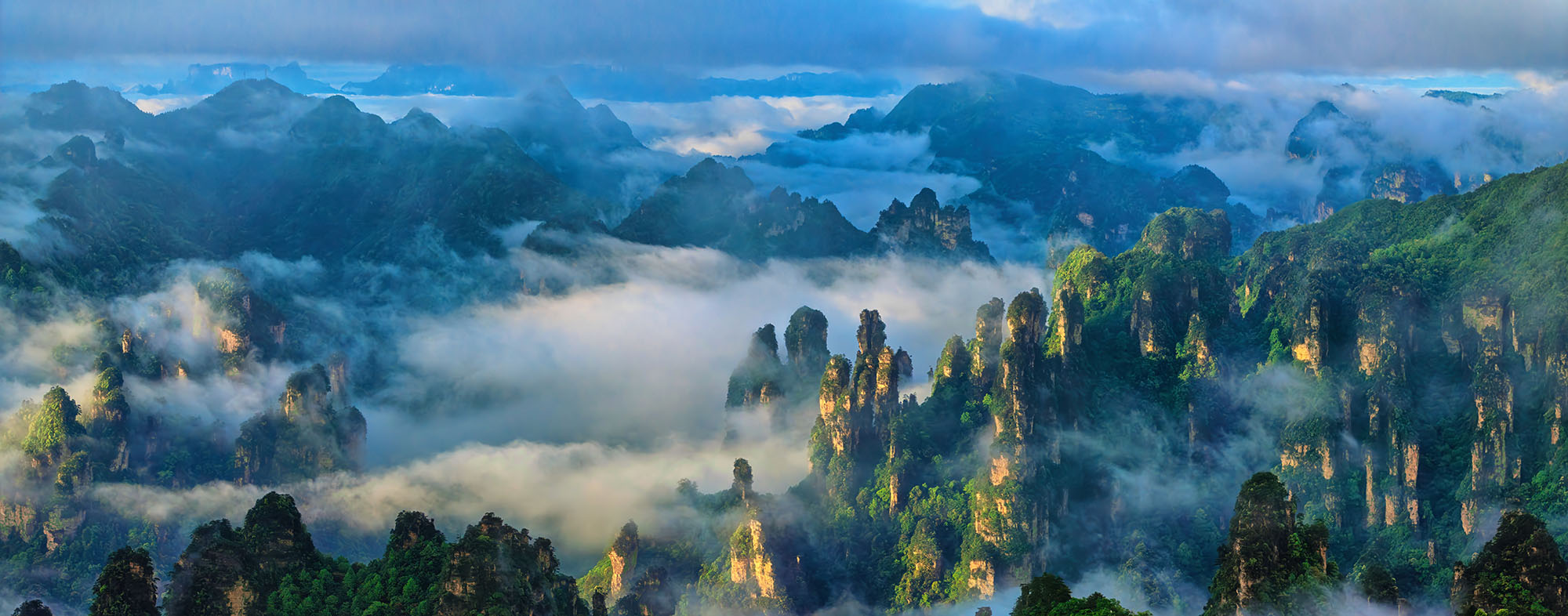
In Xiangxi, or the western part of Hunan province, mountains dominate the landscape. At the peak of summer, they are draped in lush vegetation against a clear blue backdrop, creating a visual feast. While many of these mountains are undeniably beautiful, some are truly extraordinary, making the region a magnet for tourists, particularly hikers.
In Zhangjiajie, my first stop on a seven-day trip to Xiangxi, I awoke to the sound of my alarm, feeling like a zombie as I stumbled out of bed. But when I drew the curtains open, my heart skipped a beat — the Tianmen Mountain loomed in the distance, a pitch-black silhouette resembling a giant paperweight solemnly anchored to the earth.
READ MORE: A land of imagination
As I gazed at the mountain, I was struck by the realization that these colossal "rocks" were once submerged under the sea hundreds of millions of years ago. Compared to them, our lives are but fleeting moments, vanishing in the blink of an eye.
Perhaps this is one reason why the Chinese people have always held mountains in such reverence.
In the hearts of the people of Xiangxi, Tianmen Mountain is a sacred place.
Zhangjiajie, originally known as Dayong, was once governed by the Wu Kingdom (222-280). During that time, Tianmen Mountain, then called Songliang Mountain, was already a site of interest.
In 263, a dramatic event occurred: A 1,300-meter-high cliff suddenly collapsed, unveiling what appeared to be a colossal gateway to heaven. Hence, the mountain aptly being renamed Tianmen, or "Heaven's Gate".
Our driver, 39-year-old Xu Chuang, says that Tianmen Mountain is in a constant, subtle state of change, gradually shifting its orientation to the west.
About 70 years ago, the giant cave was visible from South Wharf, which was then the most bustling area of Zhangjiajie. Today, however, to see it, one must travel to Dayong Bridge, four kilometers away from the wharf, which has since become the city's vibrant hub. "Wherever it points, prosperity follows," he says.
Now standing at 131.5 meters high, 57 meters wide, and 60 meters deep, Tianmen Cave is the highest natural karst cave worldwide. To reach it, visitors must climb 999 steep steps, unless they take the escalators that run through the mountain.
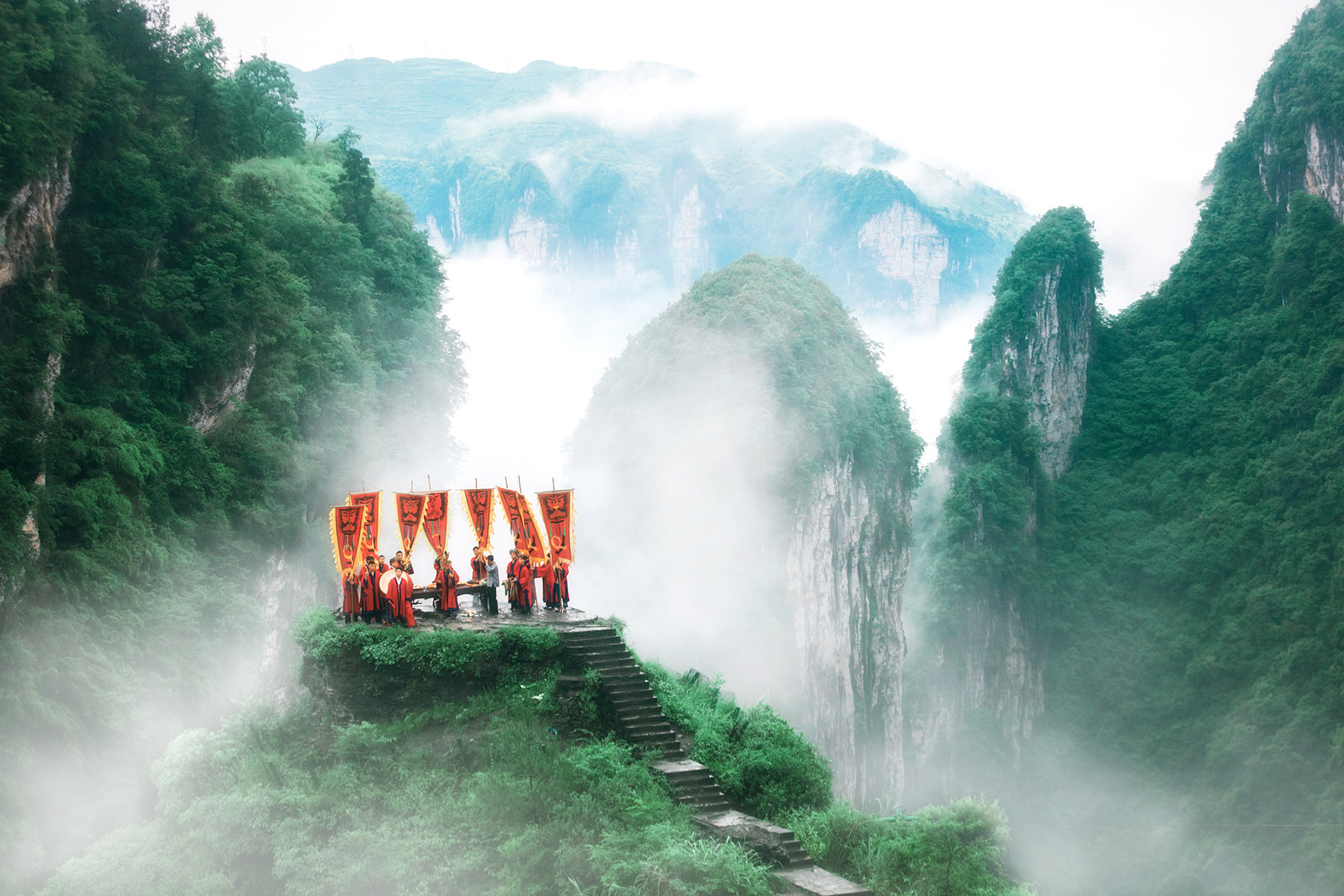
Up and down
I planned to follow the East Route to explore the mountaintop before descending to the cave.
After taking the 7.6-km cable car ride — one of the longest of its kind in the world — I reached the 1,500-meter-high summit. There, I only managed to visit the Davidia Garden, home to 150 specimens of my favorite dove trees, and walk along the 60-meter-long glass walkway that clings to the cliff.
On the glass walkway, a little girl cried as she cautiously moved along the edge closest to the mountain, guided by her father, despite the thick fog obscuring the view of the chasm below.
On such an oppressive day, the mountaintop offered a refreshing respite. Many tourists were relaxing in the shade of the trees, sipping water or enjoying snacks. In a hurry, I dashed to the entrance of the "mountain-penetrating" escalators, expecting them to take me to the other side of the mountain where I could explore the remaining eight attractions on my route. However, the escalators led me directly down to the cave instead. My ticket did not allow another escalator ride back to the mountaintop.
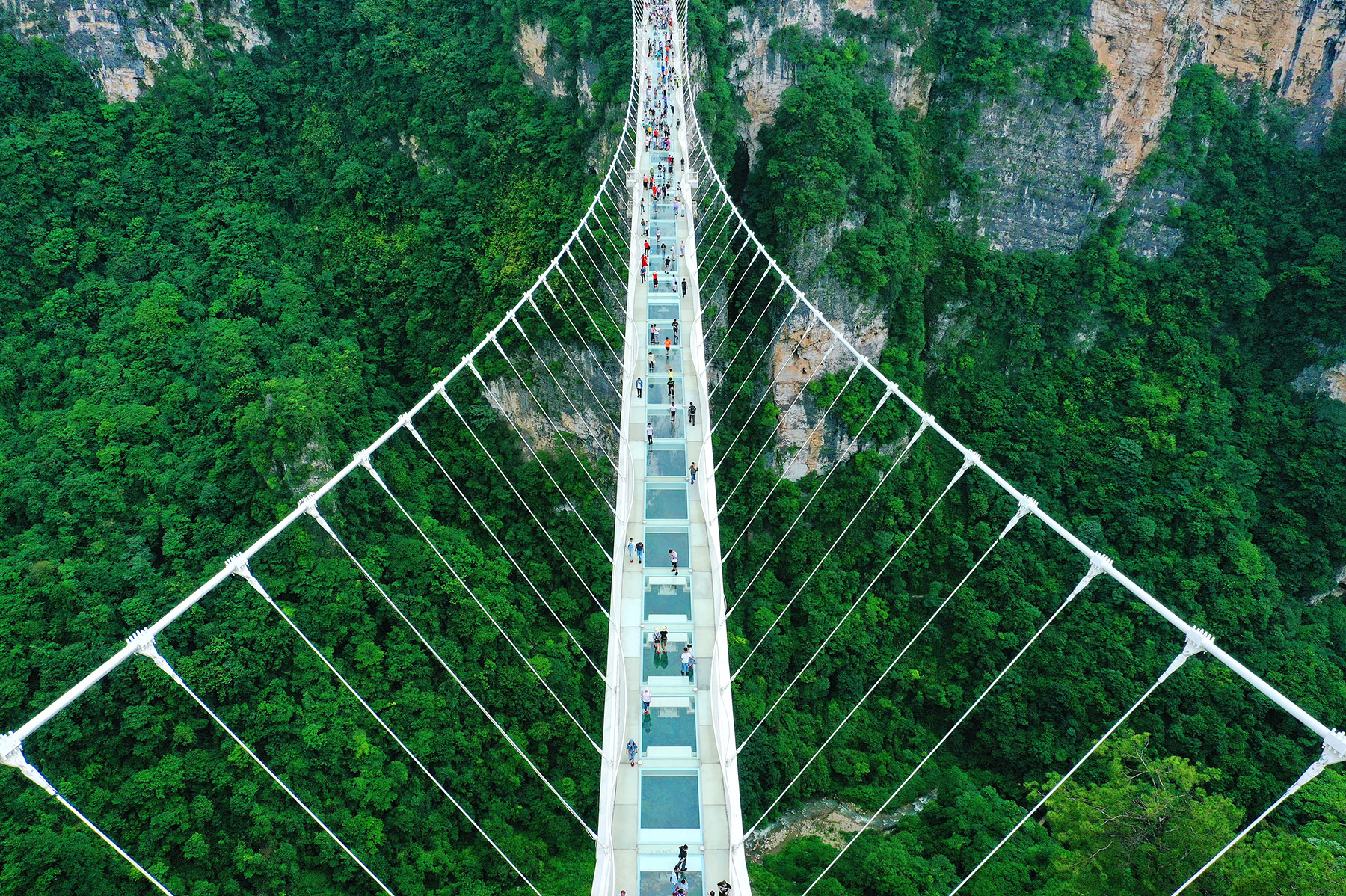
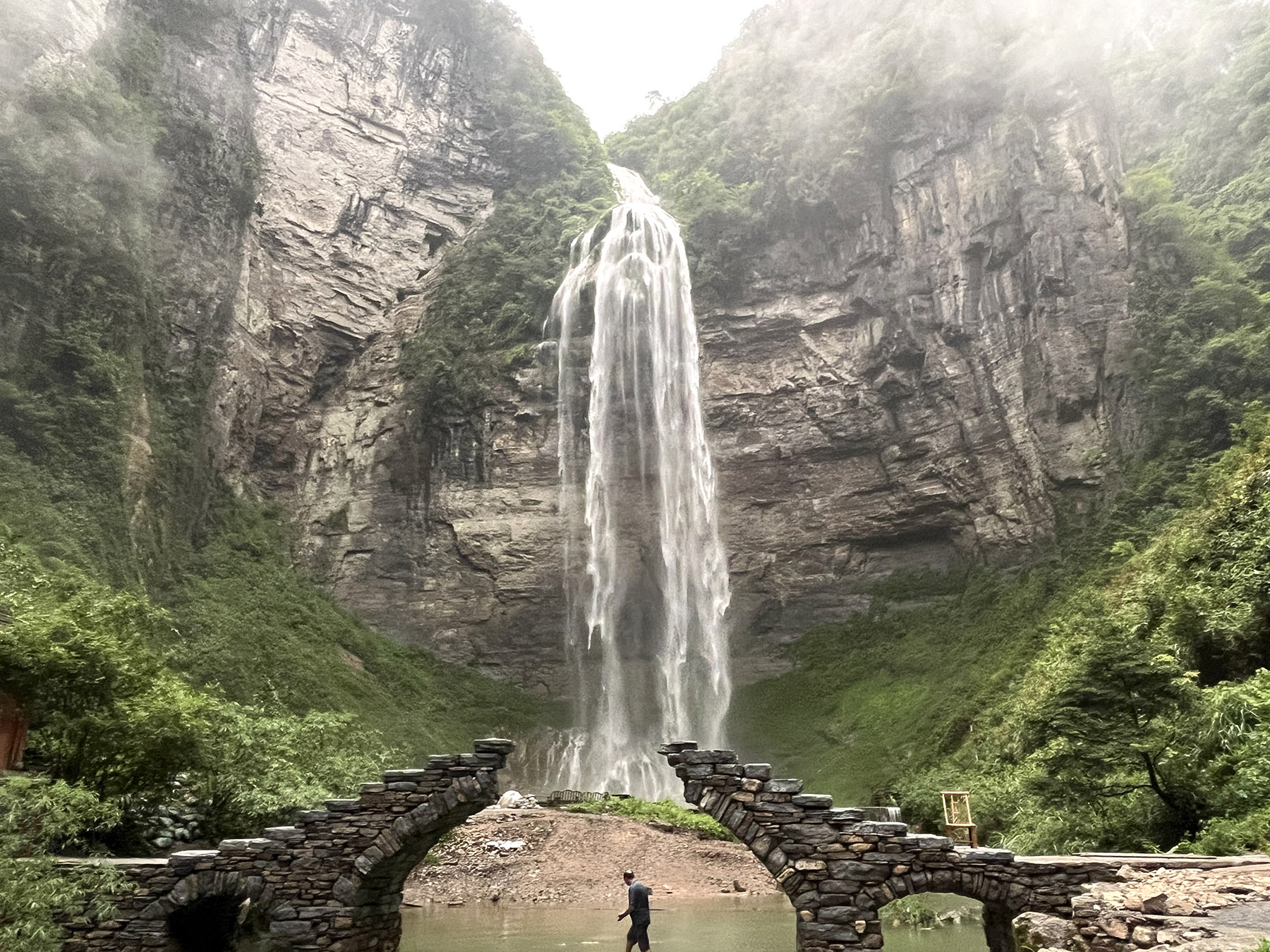
From the cave to the cable station, where another ride transported people back to the foot of the mountain, I had to choose between taking several more escalators or descending 999 steps by foot. Embracing an "I-didn't-come-this-far-to-quit" mentality, I decided to tackle the steps.
After safely landing the last step, I headed to a post office to send postcards to my friends. Upon hearing my story, a staff member suggested, "Why not climb back up the 999 steps? Otherwise, this will be the end of your visit to Tianmen Mountain".
Despite my clothes being soaked with sweat, my calves starting to feel sore, and the clock already reading 3 pm, I took her advice.
It took 18 minutes to ascend the 999 steps, my heart racing at 170 beats per minute. Once again, I found myself among a crowd of tourists taking photos of the view below. Though it's a beautiful sight, it inevitably paled in comparison to the breathtaking sandstone peak forests I saw the previous day.
At noon, drenched in sweat with my hair plastered to my scalp, I found myself lost. Following a throng of tourists, I climbed up and down steps that are supposed to lead to the most popular view in Zhangjiajie — the floating mountains that inspired the Hallelujah Mountains in James Cameron's 2009 blockbuster Avatar.
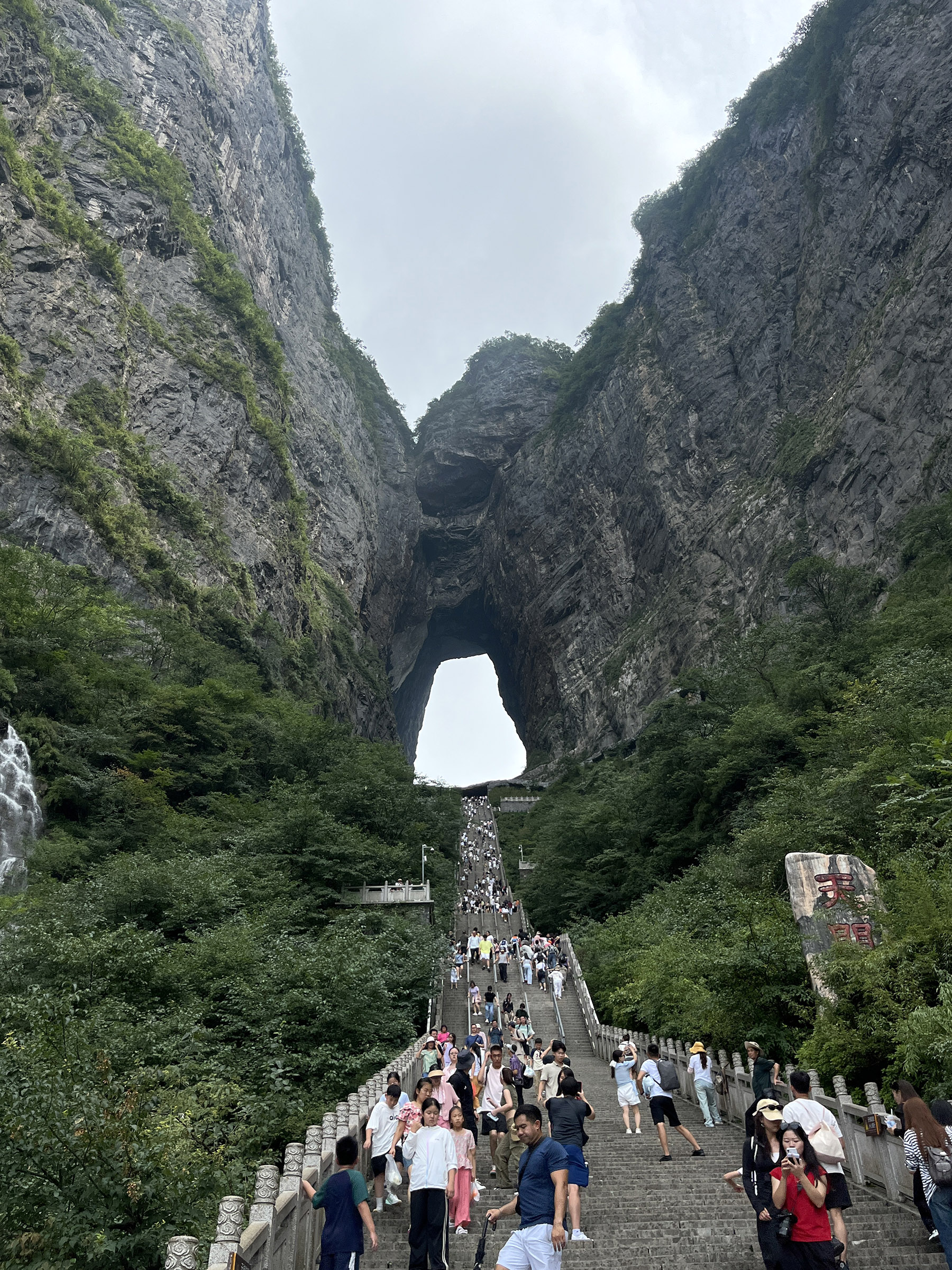
Yet, at every stop, I encountered signs pointing toward Mihuntai, which means "mesmerizing platform". After circling around, I decided to consult my phone's map app.
A few minutes later, the legendary sandstone pillars came into view — upright, unfathomable, and spectacular, like giant stone bamboo shoots that have burst through the earth with astonishing force and speed.
I had seen photos of them many times and naively thought they wouldn't be as stunning in real life, given my travels to many magnificent sites across the country.
However, standing before them, I was utterly mesmerized. I could not move and I was speechless, unable to tear my eyes away from these strange, vertical pinnacles. The only thing missing was a layer of clouds to make them appear as though they were truly floating in the air.
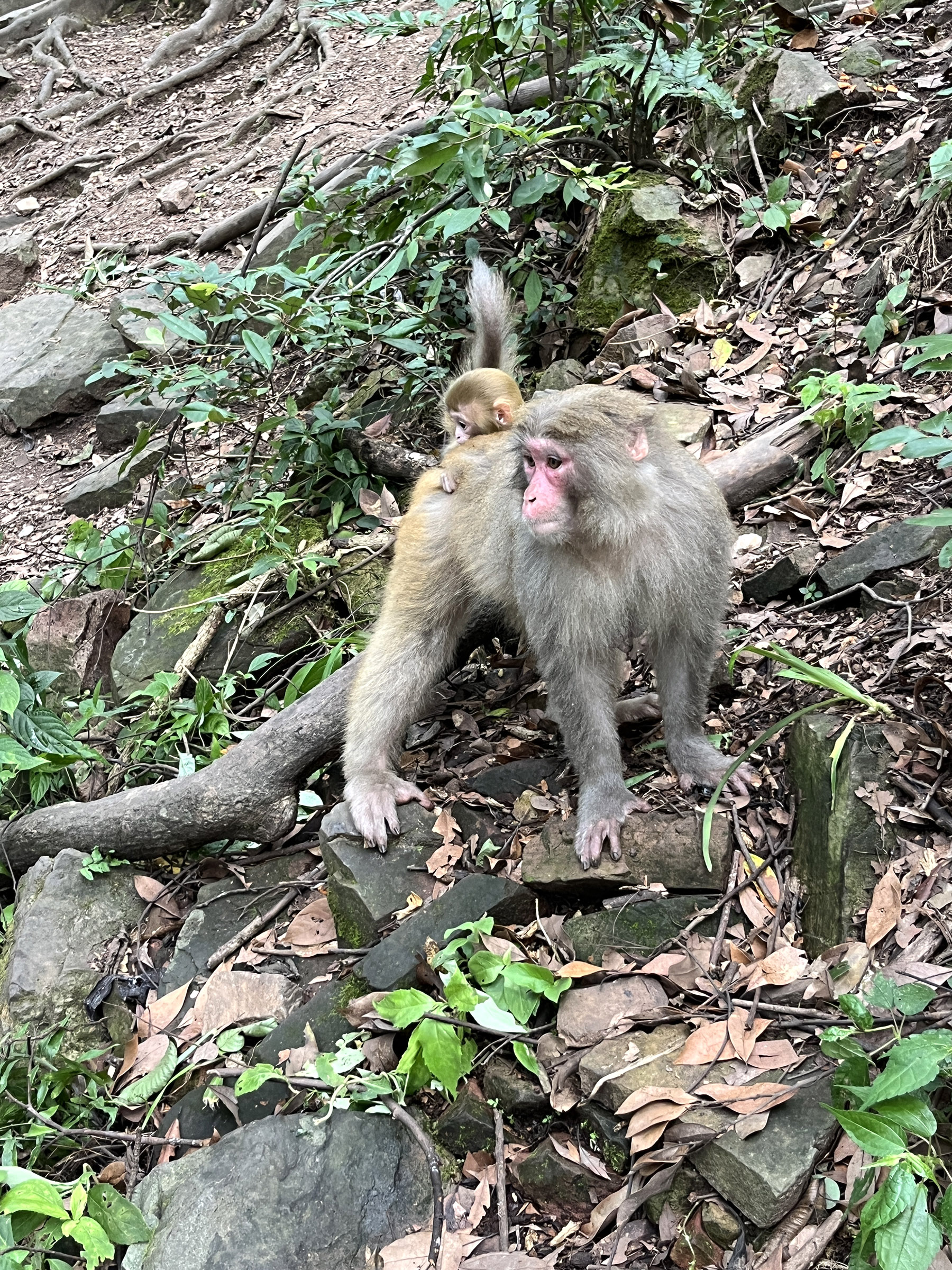
Out of this world
"Spectacular" is the only word that comes to mind. They are, indeed, out of this world.
Over 3,000 sandstone pillars tower throughout Zhangjiajie, with 1,000 soaring above 200 meters. This uniquely concentrated and pristine landscape was recognized by the global geological community in 2010 as the Zhangjiajie Landform.
Around 380 million years ago, Zhangjiajie submerged beneath the ocean. Tectonic forces eventually lifted the oceanic bedrock above sea level, transforming the area and leaving behind a 500-meter-thick layer of quartzite sandstone.
Over millions of years, water erosion sculpted the sandstone into towering pillars, deep ravines, and canyons. This process was accelerated by the subtropical climate, characterized by high humidity and heavy rainfall. Additionally, wind and temperature fluctuations contributed to the cracking and erosion of the rock formations.
Moreover, tree roots and other plants penetrated deeply into the sandstone, aiding its breakdown and further influencing the park's unique terrain.
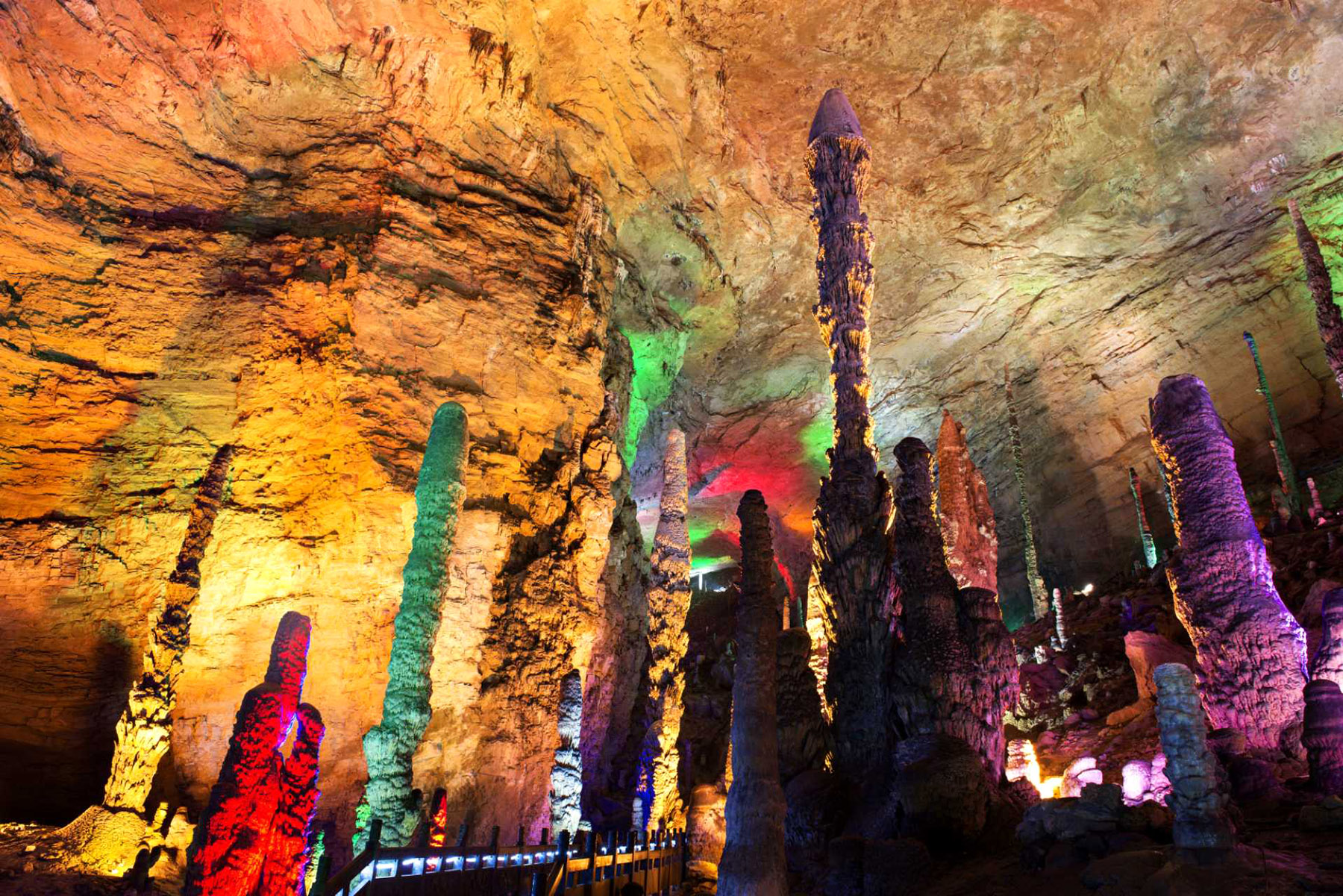
In the Tianzi Mountain area, a local guide pointed to a sandstone pillar, explaining to the crowd: "Over there, you can see a pine resembling a peacock with its tail spread, standing beside three smaller rocks beneath which is a larger rock. The entire formation resembles a boat. That's a famous attraction, 'Stone Boat Sailing Out to Sea'. It is particularly stunning when surrounded by clouds. That is the Wuling pine, a descendant of the horsetail pine. It is remarkably resilient."
Among over 500 ligneous plant species in the region, the Wuling pine is the most widespread and populous. The challenging ecological environment of the peaks shapes its identity — quartz sandstone retains little water, and the steep slopes hold minimal soil. To endure these harsh conditions, the Wuling pine has adapted by limiting its growth to conserve energy.
Its short, bristly needles withstand low temperatures, and its exposed roots work tirelessly to absorb every drop of moisture, from drizzle to mist.
Over millions of years, water erosion has crafted the sandstone pillars into a sanctuary for the Wuling pine and its fellow inhabitants, both flora and fauna, which together create a natural wonder.
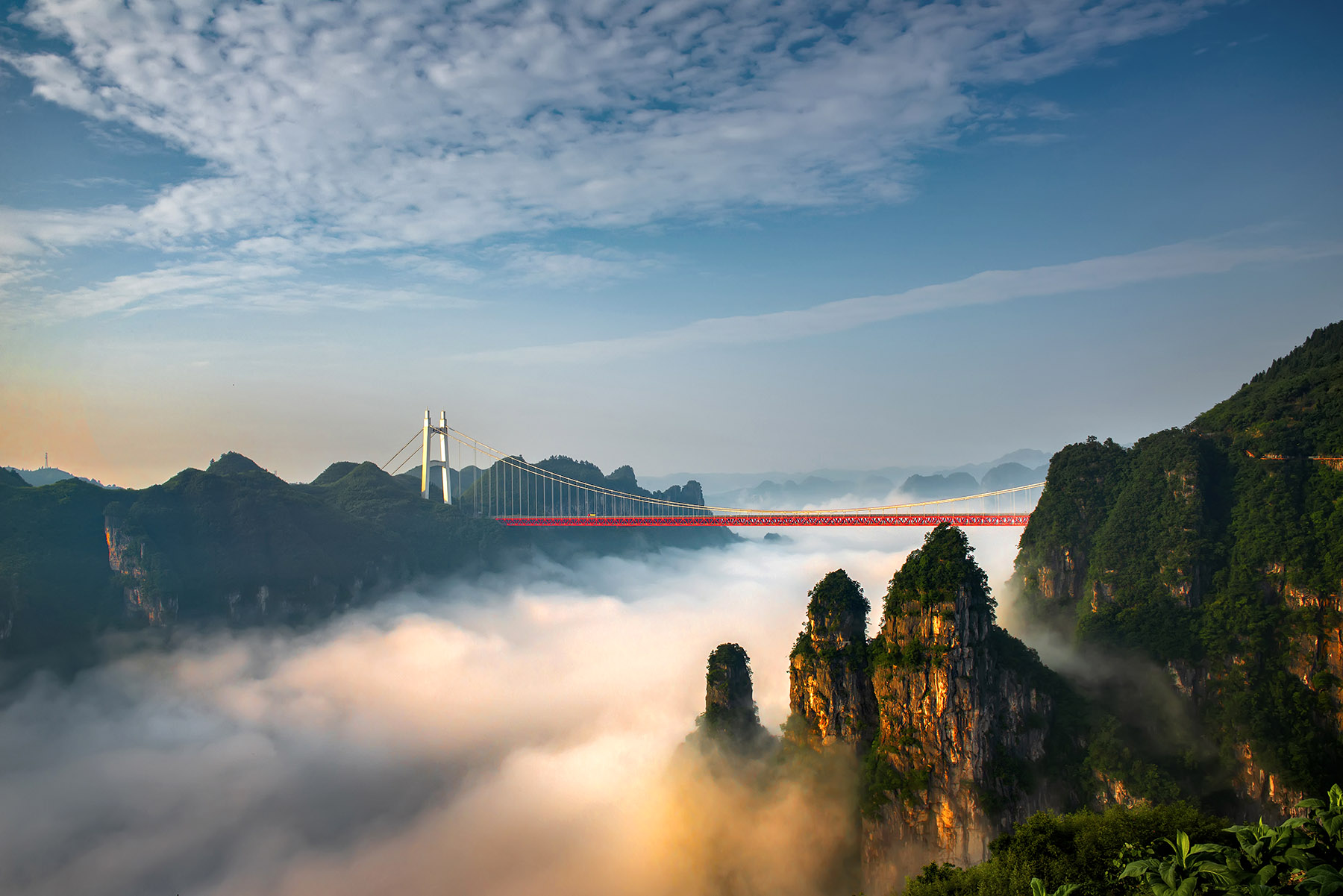
Poetic point
Traveling southward from Zhangjiajie to the Xiangxi Tujia and Miao autonomous prefecture reveals a tapestry of natural wonders. Among these, the Dehang Grand Canyon in Jishou, the region's capital, is particularly impressive.
Arriving at the canyon, I was still asleep in the car. Our guide mentioned an attraction called Tianwentai, or "Platform to Ask Questions to the Heavens". It is said to be the place where the great poet Qu Yuan composed his famous work, Tianwen, over 2,000 years ago.
I was instantly awakened and filled with excitement. Being a great admirer of Qu Yuan, I felt an immediate connection to this place.
Heavy rain had just ceased, leaving a white mist that draped the steep mountains. In the midst of this ethereal landscape, a white circular platform is nestled, embraced by the mountains. A winding stairway leads down to the platform.
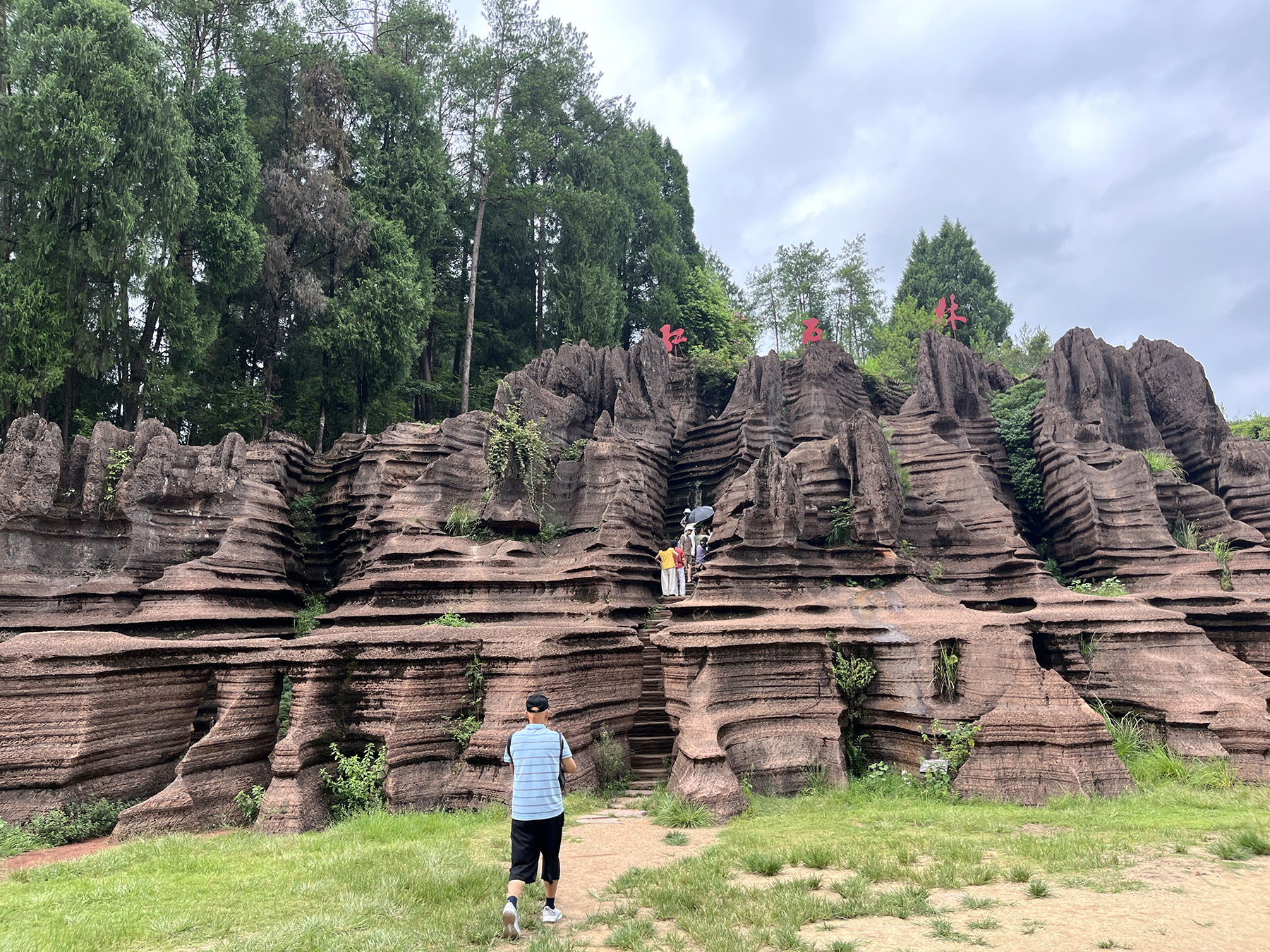
The scene was so enchanting that it seemed like a realm fit for deities. In reality, it is a sacred site where the Miao ethnic people perform rituals to worship their deities on special occasions.
Later, I discovered that this might not be the exact location where Qu Yuan wrote his poem. However, the canyon's breathtaking beauty makes it easy to imagine it as a place where such magnificent poetry could have been inspired, and where Qu Yuan might have begun the romantic tradition of Chinese poetry.
On the final day of our journey, I awoke in a damp tent perched atop the distinctive Bamian Mountain in Longshan county, which is part of the autonomous prefecture. The 1,416-meter-high mountain features an expansive summit that stretches 20 km long and up to 4 km wide. I had planned the perfect night of stargazing followed by a sunrise viewing.
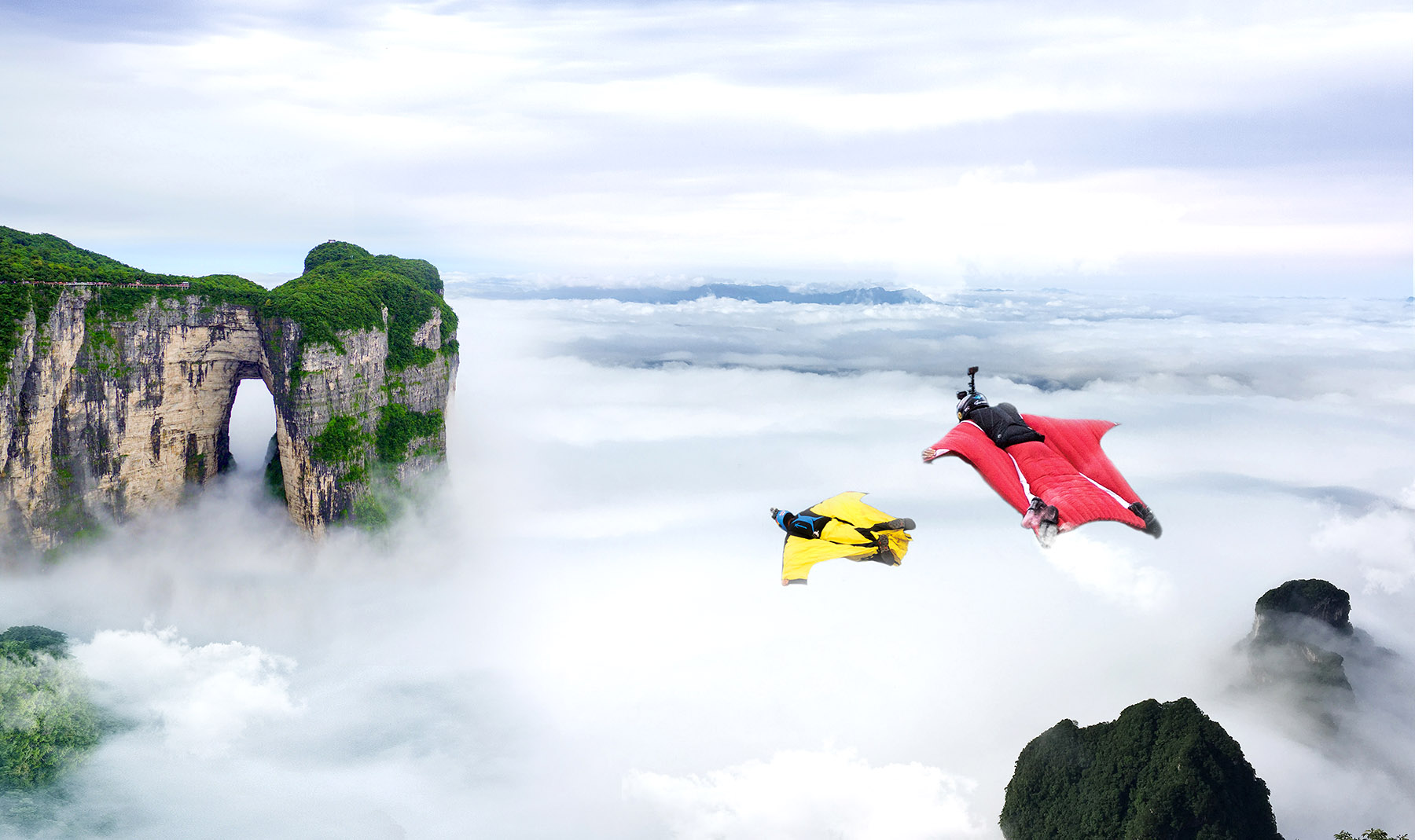
The wind howled relentlessly throughout the night, battering the tent and creating a roaring symphony that kept me anxious about the possibility of being swept away. The weather ruled out any chance of stargazing or watching the sunrise, which I had to save for next time.
After breakfast, we quickly set off for the high-speed train station, which is 130 km away.
ALSO READ: Natural wonders on display in Zhangjiajie
Feeling disappointed, I stared out the car window, lost in thought. As we navigated the winding mountain roads, a breathtaking panorama suddenly unfolded before me: a vast sea of dark green mountains punctuated by wisps of white clouds. I hurried out of the car at an observation deck to capture the scene with my camera.
At that moment of wonder, I thought to myself, "This is a perfect ending to the trip."
Contact the writer at yangyangs@chinadaily.com.cn


